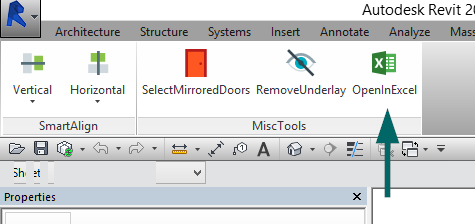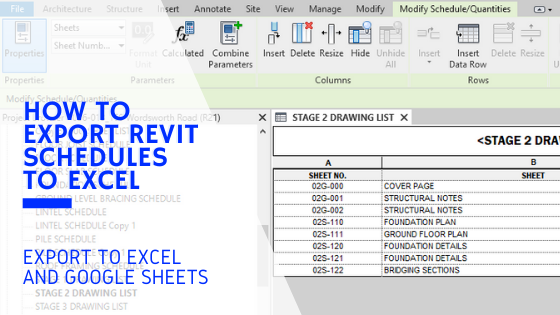Revit Tool Option for Streamlined Modeling and Style
Wiki Article
Grasping the Art of Data Combination: Just How to Seamlessly Import Excel Info Into Revit
In this short article, we will assist you through the process of grasping the art of data combination. Obtain all set to prepare your Excel information effortlessly and follow our step-by-step guide to import data right into Revit. With our ideal techniques, you'll attain data assimilation success in no time.Understanding the Importance of Data Assimilation in Revit
Recognizing the significance of information assimilation in Revit is vital for seamless importing of Excel documents. It allows you to efficiently update and handle information throughout the entire task when you incorporate data from Excel into Revit. This assimilation makes certain that your layout and building and construction procedure is accurate and current.By incorporating data, you can quickly import and update parameters, timetables, and also geometry in Revit. This gets rid of the need for manual information access, conserving you time and minimizing the risk of errors. With Revit's data assimilation abilities, you can maintain uniformity and accuracy in your project, while additionally enhancing collaboration amongst employee.

Checking Out the Excel Documents Format for Revit Integration

In order to successfully incorporate Excel data into Revit, it is essential to ensure that the information is formatted properly. This includes properly classifying rows and columns, in addition to structuring the data in a manner that works with Revit's information schema. Revit utilizes particular criteria and groups to organize information, so it is essential to align the Excel information with these parameters to make certain a seamless integration.
In addition, it is necessary to note that Revit just supports specific data kinds when importing from Excel. These include message, numbers, and days. Any type of other information types, such as formulas or conditional format, will not be recognized by Revit and might cause concerns during the assimilation procedure.
Preparing Your Excel Data for Seamless Import Into Revit
To ensure a smooth assimilation process, you'll require to properly style and label the columns and rows in your Excel data prior to importing it into Revit. This step is important since it permits Revit to precisely translate and organize your information. Beginning by examining your Excel information and recognizing which columns and rows contain pertinent information for your Revit task. Then, make certain to identify each column with a descriptive and clear header. This will assist you and others easily comprehend the purpose of each column and prevent complication during the import process.Following, make sure that the information in each column is appropriately formatted. As an example, if you have a column for measurements, make certain that all measurements are regularly formatted in the same systems of dimension. Revit counts on regular format to properly interpret and import data.
Additionally, it is very important to look for any empty cells or inconsistencies in your data. Revit might not be able to check out or import data from cells that are vacant or consist of mistakes. Consequently, it is recommended to examine your Excel data and tidy up any disparities prior to importing it right into Revit.
Step-By-Step Overview to Importing Excel Record Into Revit
When you've effectively formatted and classified your Excel information, you can quickly import it right into Revit by following this detailed guide. To start, open Revit and browse to the "Insert" tab. revit plugins.Next, a dialog box will certainly show up, permitting you to tailor the import settings. Here, you can select the worksheet you wish to import, define the variety of cells to import, and select the appropriate devices for your information. Once you've made your choices, click "OK" to proceed.
Revit will now show a preview of your Excel information. Take a minute to evaluate the sneak peek and make sure that whatever looks correct. If required, you can make modifications to the import setups by clicking on the "Setups" button.
Best Practices for Information Assimilation Success in Revit
Make certain you comply with these best practices to ensure successful assimilation of information in Revit. It is vital to arrange your data in Excel before importing it into Revit. Be conscious of the devices and data kinds when mapping the information, as any type of inconsistencies can lead to errors in the integration process.An additional vital technique is to consistently confirm and update your data. Furthermore, make use of information validation devices within Revit to identify any type of errors or variances in the integrated information.
Lastly, it is suggested to establish a clear operations for data assimilation. This includes specifying roles and duties, setting up an interaction channel in between staff member, and developing a routine tempo for data updates and testimonials. By following these finest practices, you can make sure a seamless and successful combination of information in Revit, ultimately enhancing the performance and accuracy of your job.
Conclusion
Finally, understanding the art of data combination is crucial for seamless import of Excel submits right into Revit. Understanding the relevance of information integration in Revit is the primary step towards effective assimilation. Checking out the Excel file style for Revit assimilation helps in recognizing the requirements and restrictions. Preparing the Excel data appropriately and adhering to a detailed overview is essential for a smooth import process. By adhering to best practices, you can make sure information assimilation success in Revit and make one of the most out of your task.When importing data from Excel into Revit, it is essential to comprehend the data style and exactly how it can impact the combination procedure (revit tool). Revit makes use of details criteria and groups to arrange data, so it is essential to align the Excel data with revit tools these parameters to ensure a smooth integration
Be conscious of the data and units types when mapping the data, as any discrepancies can lead to errors in the integration process.
Additionally, make usage of information validation tools within Revit to determine any kind of errors or inconsistencies in the integrated information.

Report this wiki page